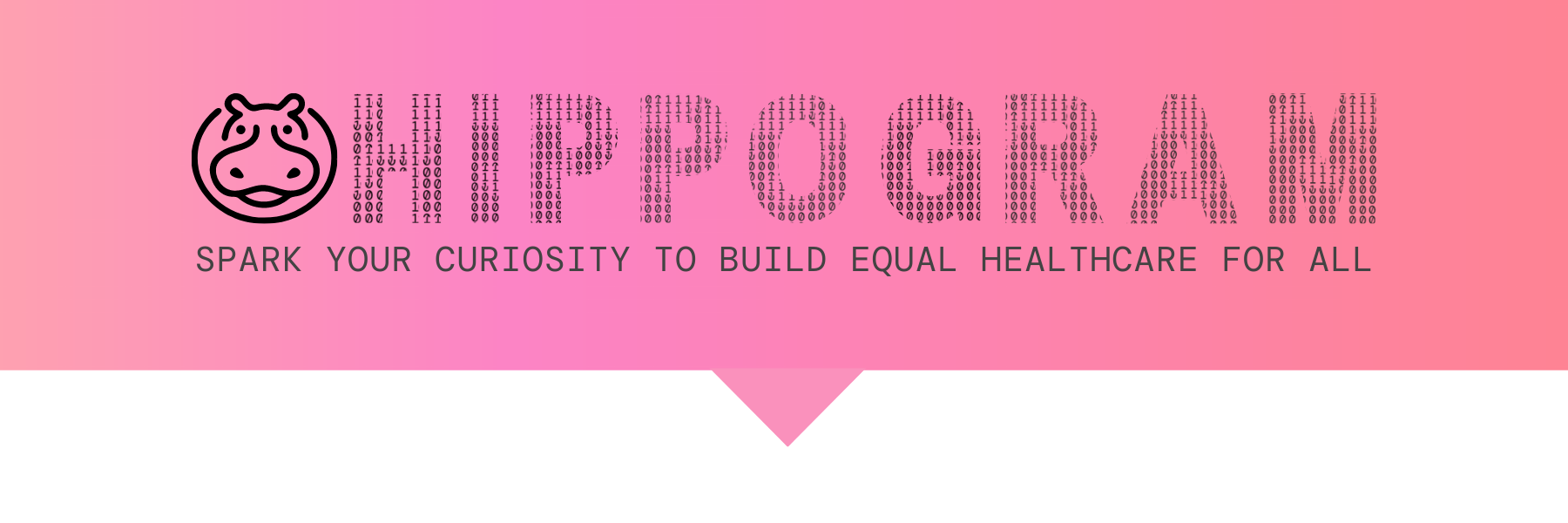Who owns the future? Common Goods, Open-Source and Intellectual Property -- 🦛 💌 Hippogram #2

You are about to read our newsletter for health and tech professionals - the bi-weekly Hippogram.
I'm Bart de Witte, and I've been inside the health technology industry for more than 20 years as a social entrepreneur. In that time, I've witnessed the evolution of technologies that are changing the face of healthcare, business models and culture in unexpected ways.
In the newsletter, I share my knowledge and insights about building a more equitable and sustainable global digital health. Sharing knowledge is also what my Hippo AI Foundation, named after Hippocrates, focuses on and it is an essential part of a modern Hippocratic oath. Know-How will increasingly result from the data we produce, so it's crucial to share it in our digital health systems.
Was this newsletter forwarded to you? You can sign up here for the whole Hippo experience.
In this week's post, I raise the questions: Who owns our future, and how can we use commons and open source to build a more equitable society?
A Pandemic Of Scarcity
A small team of researchers led by Maria Elena Bottazzi and Peter Hotez MD PhD at the Texas Children's Hospital and from the Baylor College of Medicine developed. Since December, the Corona vaccine "Corbevax" has been licensed in India. It is effective and cheap to produce. What makes it special is that the researchers have not applied for a patent. Corbevax" is, therefore, an open-source vaccine. It could be produced easily and cheaply wherever it is technically possible.
In contrast to many of the leading vaccine providers such as BioNTech, Pfizer or Moderna, the team around Hotez and Bottazzi did not receive grants from the government. "People were so focused on innovation that no one came up with the idea: 'Hey, maybe we could use a low-cost, durable, easy-to-use vaccine that could vaccinate the whole world,'" Hotez said. "That's why the team of researchers resorted to a funding pot mainly provided by private individuals. More than 6 million dollars came together. That was apparently enough."
This bottom-up development stands in stark contrast to the top-down COVAX programme of the WHO. It works with governments and manufacturers to ensure that people living in low- and middle-income countries receive vaccines.
Why does it stand in stark contrast? As it doesn't focus on extending the dependencies and power asymmetries, it gives local companies within these regions the blueprint to produce their own vaccines. The team in Texas has transferred the technology to producers in India, Indonesia, Bangladesh and Botswana. I am well aware this simplifies, but with only 1 billion doses delivered to date, we have to admit that COVAX did not break the cycle.
When transitioning towards a more sustainable and resilient global society, as described in the UN in the 2030 agenda, we need to interlink all the 17 Sustainable Development Goals. This means when it comes to providing good health (DG3), we need to support small and medium-sized enterprises and startups within these regions and give them the resources to do so. As I wrote in my last Hippogram, Africans now have their own smartphone company that produces a smartphone equivalent to an iPhone 7. It is available for 58$, so why should we not distribute the building blocks that can reduce global inequalities in health by empowering people locally?
Walls Kill Speed And Lives
On 10.1.2020, Zhang Yongzhen, a Chinese virologist, published the sequence of the SARS-CoV-2. Based on this, the virologist at the Charité Hospital in Berlin Victor Corman (in Team of Christian Drosten), published the first corona PCR test as an open protocol in record time. As early as January 13, the World Health Organization (WHO) presented Corman's protocol as the first guide for detecting the new virus. From the publication of the gene sequence from China to the publication of their test, Corman and his team needed just three days. This open data distribution was the origin of what Eric Topol called one of science and medical research's greatest achievements, compressing several years of work into months, developing an mRNA vaccine.
This rapid, open data sharing as an act of altruism probably saved hundreds of thousands of lives. The new open-sourced vaccine will probably do the same while creating local economic opportunities in India, Indonesia, Bangladesh and Botswana, reducing the power asymmetries between high and low-income countries. Even if this reduction will be minimal, it is something I celebrate as it's opening the doors for a sustainable and more equitable society and breaks with old dogma's.
During the last 20 years, the way we collaborate using the internet has had profound implications for our lives and work. It has changed how people can contact each other, how they can share information, how they can find each other. These collaborative environments became the standard in open-source software development but slowly infect all other goods-producing industries.
Open-source innovation is ripping the guts out of the scarcity model that underpins the healthcare industry and leads to global health inequalities. One may wonder what would have happened if the Charité virologist had patented his protocol, or worse if Zhang Yongzhen had patented the gene sequence of the SARS CoV-2 virus? Would you still be here reading this? Fortunately, our political leadership stopped the ridiculous idea of patenting genes 20 years ago and made the human genome a public domain. I've included one of my favourite articles describing how diplomacy helped end the race to sequence the human genome.
Bringing Lives Before Profit
The scarcity model in the U.S. has led to deaths among patients with type 1 diabetes because there is no affordable insulin. Uninsured diabetics are launching crowdfunding campaigns to survive and access insulin that costs them $1500 per month. Anthony di Franco and a group of biohackers from many countries, including the U.S., Brazil, Dakar, Senegal, Cameroon and Puerto Rico, are working on an open insulin project to end the insulin shortage that threatens the lives of diabetics. Their Open Insulin Project focuses on developing methods and hardware that will enable communities and individuals to produce medical-grade insulin for the treatment of diabetes using genetically engineered yeast. Read more about how the Open Insulin Project will disrupt a 27 billion dollar market in our “Innovator of the week” section.
We have seen similar achievements with the open-source development of an open PCR machine, bringing down the costs of EUR 7,200.00 to EUR 399. OpenPCR kits are currently manufactured and distributed by Chai, a company founded by Josh Perfetto and Jessie Ho to democratize access to molecular diagnostics.
Or Open Bionics, founded by Joel Gibbard and Sammy Payne, bringing down the cost of bionics arms from EUR 80,000 to approx. EUR 10,000. I talk to many investors, CEOs and board members about the digital transformation. My advice will always be to not look at open source as the enemy but as the solution to break R&D costs while improving their Environmental, Social and Corporate Governance Scores, something one can consider as a form of corporate social credit score. As ESG’s will become an essential driver of sustainable development and human prosperity, companies will be looking for new ways to build more inclusive medical innovations.
